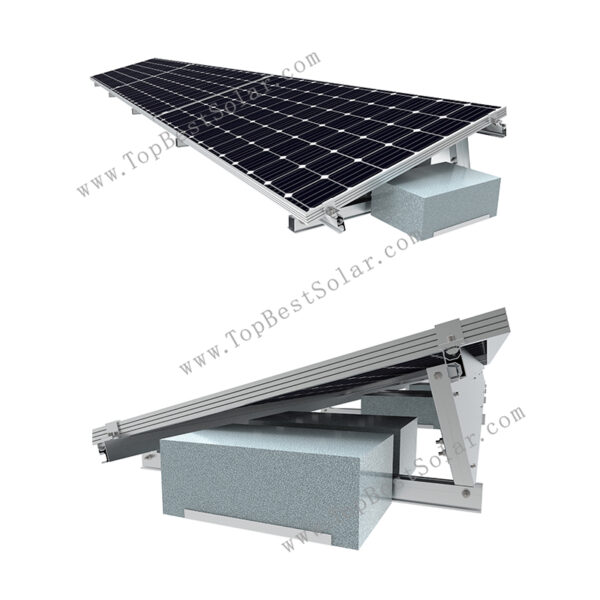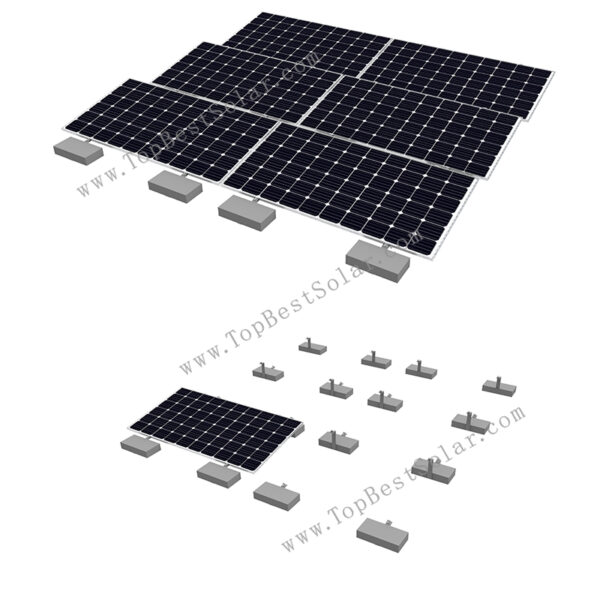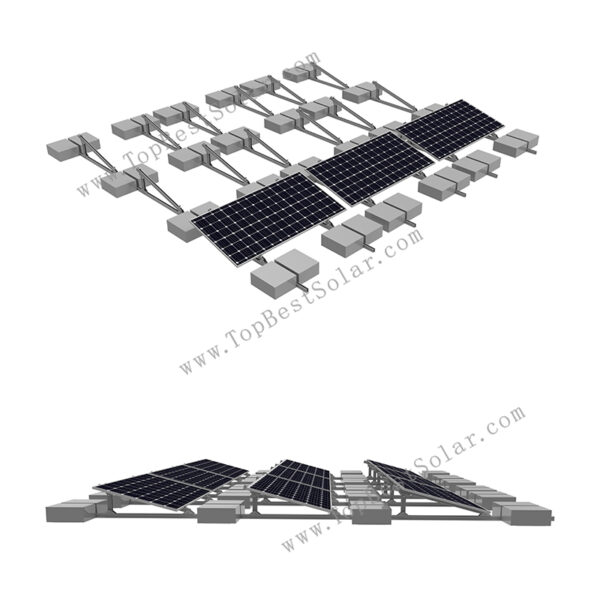Types of Solar Panel Mounting Systems
Not all mounting systems are created equal—your choice depends on location, roof type, and budget.Here are the most common options:
Rooftop Mounting Systems
The most popular choice for residential and small commercial properties, as they use existing space.
– Penetrating Mounts: Drill into the roof (e.g., asphalt shingles, metal) to secure rails.Ideal for sloped roofs;offers high stability but requires waterproofing to prevent leaks.
– Ballasted Mounts: Weighted with concrete blocks (no drilling).Perfect for flat roofs (e.g., commercial buildings) but needs sufficient roof load capacity.
– Hybrid Mounts: Combine penetration and ballasting for flat/sloped roofs;balances stability and leak risk.
Ground-Mounted Systems
Suitable for large properties (e.g., farms, industrial sites) with open land.
Fixed-Tilt Mounts: Panels are set at a fixed angle (optimized for local sunlight).’ Low cost and easy to maintain.
Tracking Mounts: Panels follow the sun’s path (single-axis: east-west; dual-axis: 360°).’ Boosts energy output by 20–40% but costs 50–100% more than fixed systems.
Pole-Mounted Systems
Mount panels on tall poles (5–10ft high) for areas with shading (e.g., trees, buildings).’ Often used for small residential setups or remote locations (e.g., cabins).
Step-by-Step Installation Guide
While professional installation is recommended, here’s an overview of the process:
Site Assessment
Permits
Material Prep
Mount Installation
Rooftop
Ground
Panel Attachment
Testing
Cost Factors for Solar Panel Mounting Systems
Total cost depends on 3 key factors:
Materials
Labor:
Customization:
Maintenance Tips
To extend the life of your mounting system (15–25 years lifespan):
Inspect quarterly: Check for loose brackets, rust (on steel parts), or roof leaks (rooftop systems).
Clean annually: Remove debris (leaves, dirt) from rails and panels to prevent corrosion.
Winter prep: Clear snow from ground/tracking systems to avoid weight damage.
Repair promptly: Replace damaged brackets or waterproofing to avoid further issues.
FAQs
Q1: Can I install a solar panel mounting system myself?’A: For simple fixed-tilt ground systems, experienced DIYers may attempt it.’ However, rooftop systems (especially penetrating) require expertise to avoid roof damage—hire a pro.
Q2: How do I choose the right angle for my mounting system?’A: The optimal angle equals your latitude (e.g., 35° for Los Angeles, 50° for Toronto).’ Tracking systems adjust automatically.
Q3: Are mounting systems weather-resistant?’A: Yes—most use aluminum (rust-proof) or galvanized steel.’ Look for systems rated for local weather (e.g., wind speed, snow load).
Conclusion
A high-quality solar panel mounting system is just as important as the panels themselves—it ensures safety, maximizes energy output, and protects your investment.’ When choosing a system, consider your location (rooftop vs. ground), budget (fixed vs. tracking), and local weather conditions.’ For best results, work with a certified installer to assess your site and select the right components.’ With proper installation and maintenance, your solar mounting system will support reliable clean energy for decades.









